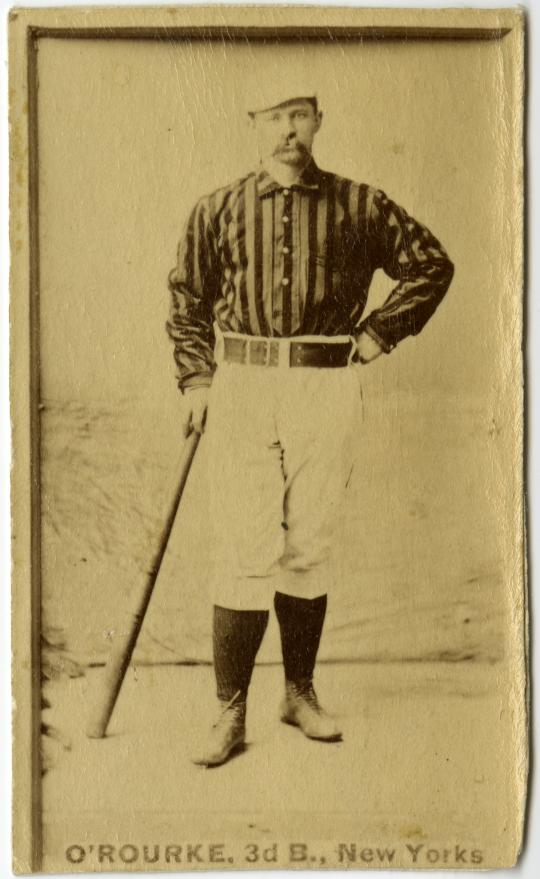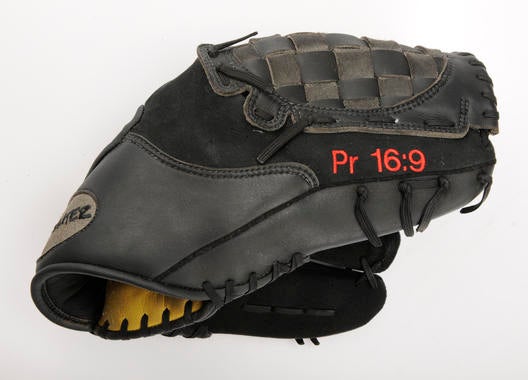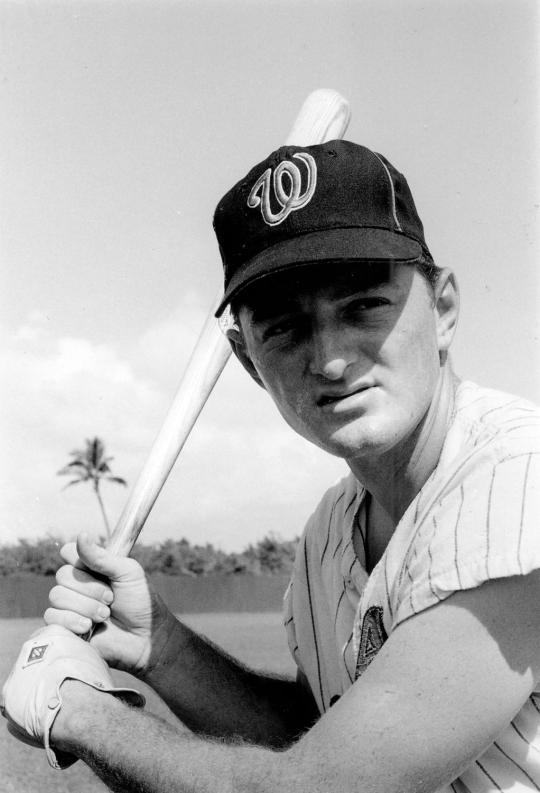“It is one of the missions of this Museum to preserve history, and this includes the way that technology has shaped and transformed the game, just like it has all aspects of our culture.”
Same Game, Different Tools
“I have tried Nike, Mizuno and Rawlings,” Gordon said. “I have nothing against those gloves and they definitely do a good job at serving their purpose. But I really love the fact that this glove is personalized and molded to my hand.”
Produced by Scott Carpenter of the Carpenter Trade Company, based in Cooperstown, the glove, made entirely of synthetic materials, is not only as durable as a traditional glove but also 5 to 10 ounces lighter.
“It just made sense to me,” Gordon said. “If I’m going to be 60 feet away from these big animals trying to hit line drives, I want something a little lighter.”
Minimizing injuries was also the impetus for Charlie O’Brien when he designed the first hockey-style catcher’s mask. A veteran of 15 major league seasons for eight different clubs, the longtime backstop had, like every other catcher, been using a flat-style catcher’s mask when he came up with an idea that would revolutionize the position.
“I ended up just making it for myself. I just got tired of the masks just getting lighter and lighter through the years,” said O’Brien, in a telephone conversation from his home in Tulsa, Okla. “So I tried to design something that was a lot safer, actually heavier, to deflect things, to not get hit square. The reason why I made it is I was tired of getting beat up.
“I’d been a hockey fan since I was a little kid. And I always followed goalies anyway, so I figured if they could stop a hockey puck going 100 miles per hour then they ought to do the same thing for baseball.”
After a thorough review by MLB, O’Brien first used the new hockey-style mask in a 1996 regular season game. Today, more than half of all big league catchers use a version of it.
“It’s fun to go to a Little League game and see kids wearing it and knowing that you’re the one who originated it,” O’Brien said. “It’s fun knowing you gave something back to the game. It’s just my contribution to the art of catching to make it safer.”
In 2002, O’Brien donated one of his hockey-style catcher’s masks, emblazoned with a Toronto Blue Jays logo and his signature phrase “Catch Ya Later,” to the Hall of Fame.
“I think it’s cool. That’s the only thing I’ll ever have that will get in there,” O’Brien said with a laugh. “I’m very honored and very privileged that people think enough of it to put it in there.”
Bill Francis is a library associate at the National Baseball Hall of Fame and Museum






